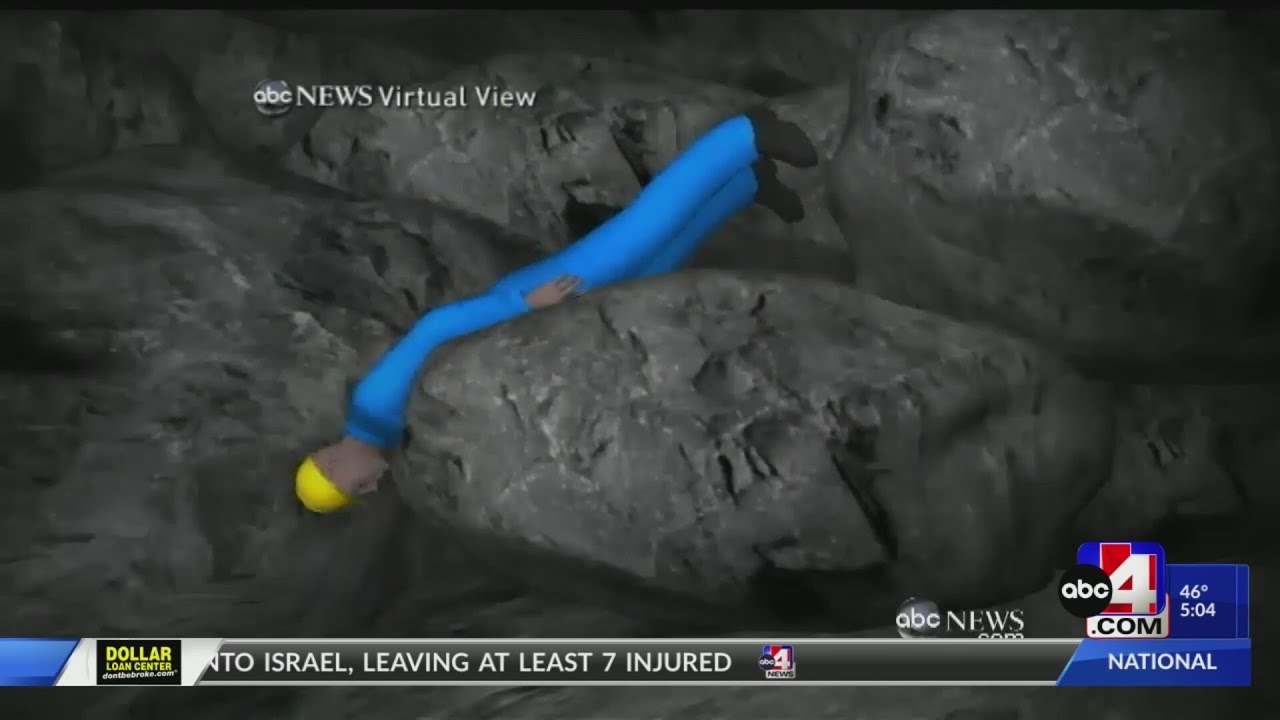
The Nutty Putty Cave in Utah is one of the most talked-about natural sites in the world, not for its beauty, but for the chilling story connected to it. This hydrothermal cave was once a popular destination for scouts, families, and caving enthusiasts who wanted to test their endurance inside its twisting tunnels and narrow chambers. With its clay-like walls that gave it a strange texture, the cave quickly earned a reputation for adventure and challenge.
Yet, despite its popularity, the cave became infamous after one of the most tragic accidents in caving history. In November 2009, a young father named John Edward Jones became trapped deep inside the Nutty Putty Cave. His story not only shook the caving community but also led to the permanent closure of the site. Today, the Nutty Putty Cave is a place of sombre reflection rather than exploration, forever tied to the memory of the man who lost his life within its depths.
The History of Nutty Putty Cave
The Nutty Putty Cave was discovered in 1960 by Dale Green, a caver who was fascinated by underground landscapes. The cave, located on the west side of Utah Lake, was formed through hydrothermal processes. Its walls, coated with a clay-like substance that resembled children’s putty, gave the cave its unusual name. From the start, it became a well-loved destination for those eager to experience underground exploration in Utah.
For decades, the Nutty Putty Cave attracted Boy Scouts, students, and professional cavers. Many saw it as a training ground for learning how to navigate tight passageways and develop the skills required for more advanced expeditions. Despite warnings of its dangers, the allure of its twisting tunnels remained strong. By the early 2000s, however, the cave had already earned a reputation for being treacherous, with several reported rescues prior to the infamous 2009 incident.
The Infamous Birth Canal and Cave Layout
Among the many narrow sections of the Nutty Putty Cave, one passage gained particular notoriety: the Birth Canal. This tight squeeze was so narrow that cavers had to force their bodies through at unusual angles, sometimes inching forward slowly with little room to breathe. The passage was both a challenge and a danger, and it quickly became one of the cave’s most infamous features.
The Nutty Putty Cave map revealed a labyrinth of twisting tunnels, tight crawls, and small caverns. Key sections such as Ed’s Push and the Scout Trap tested even the most experienced adventurers. Cave diagrams illustrated just how unforgiving the structure was, showing areas where the rock walls pinched so closely together that there was barely enough room for a human body. Despite these warnings, many continued to attempt the challenge, drawn by curiosity and the thrill of exploration.
The Nutty Putty Cave Incident of 2009

On 24 November 2009, John Edward Jones entered the Nutty Putty Cave with his family and friends. At 26 years old, John was an experienced caver who had explored similar caves before. This trip was meant to be an exciting family adventure just before Thanksgiving. However, it quickly turned into one of the most heart-breaking stories in the history of caving.
Believing he had found the Birth Canal, John crawled headfirst into a narrow shaft that he thought he recognised. Unfortunately, he had made a fatal mistake. The tunnel was not the Birth Canal but a different, tighter passage that sloped downward. Within moments, he found himself trapped upside down, with his body jammed into the rock at an angle of almost seventy degrees. Despite his best efforts, he could not free himself, and the terrifying ordeal began.
Why John Jones Could Not Be Saved
Rescuers arrived swiftly and immediately began efforts to save John Jones. Teams of volunteers and professionals worked tirelessly in the tight conditions, trying to reverse his position and pull him out. They brought in ropes, pulleys, and anchoring systems, attempting to lift him free from the unforgiving rock. However, the narrow passage left little room for manoeuvring, and each attempt came with significant risk.
One of the biggest challenges was John’s position. Being upside down for such a long time caused blood to pool in his head and chest, placing immense strain on his body. His breathing became laboured, and time was working against him. The pulley system initially offered hope, but the equipment eventually failed under the strain. After more than 27 agonising hours, rescuers were forced to face the devastating truth: John Edward Jones could not be saved.
Closure and Sealing of Nutty Putty Cave
The aftermath of the Nutty Putty Cave incident left the community in shock. Authorities faced a difficult decision regarding the future of the cave. Ultimately, it was determined that the Nutty Putty Cave would be permanently closed to the public. John’s body, trapped deep within the passage, could not be recovered. Instead, the entrance was sealed with concrete, leaving the site as his final resting place.
The closure sparked strong emotions. For some, it was a necessary measure to prevent further loss of life, as the cave had proven to be too dangerous for public exploration. For others, it marked the loss of a natural landmark and a training site that had been part of Utah’s heritage for decades. Today, the sealed Nutty Putty Cave entrance stands as both a memorial and a warning of the cave’s dark history.
Legacy and Media Coverage
The Nutty Putty Cave accident became a global story, covered extensively in news reports, documentaries, and online platforms. The tragedy was later depicted in the 2016 film The Last Descent, which gave viewers a dramatic retelling of John Jones’ final hours. This film, along with countless articles, videos, and discussions, ensured that the memory of the Nutty Putty Cave incident would not fade.
Even today, forums such as Reddit and YouTube channels continue to discuss the details of the Nutty Putty Cave and the tragic fate of John Jones. The story resonates with people because it combines human bravery, tragedy, and the unforgiving reality of nature. For the caving community, it serves as a powerful reminder of why preparation, safety, and respect for natural environments are essential.
Nutty Putty Cave Now
Since its closure, the Nutty Putty Cave has remained sealed, with no possibility of exploration. Visitors may approach the site, but they are met with a concrete barrier marking the entrance. For many, this sealed doorway serves as a symbol of both respect and mourning for John Jones, whose body remains inside.
Today, the Nutty Putty Cave is not viewed as a destination for adventure but as a place of reflection. It stands as a sombre monument, reminding people of the dangers of extreme exploration. At the same time, it has influenced a new generation of cavers and outdoor enthusiasts to take safety more seriously, ensuring that tragedies like this are less likely to occur in the future.
Conclusion
The Nutty Putty Cave accident is one of the most unforgettable events in caving history. The story of John Edward Jones highlights not only the thrill of exploration but also the dangers of underestimating the natural world. His tragic death inside the Nutty Putty Cave remains a cautionary tale for adventurers around the world.
Though the Nutty Putty Cave has been permanently sealed, its legacy lives on through films, discussions, and the memories of those who knew John. It stands as both a grave and a lesson, a reminder that curiosity and courage must always be balanced with respect for the risks that come with exploring the unknown.
FAQs about Nutty Putty Cave
Where is the Nutty Putty Cave located?
It is situated in Utah County, west of Utah Lake, in the United States.
What happened to John Edward Jones in Nutty Putty Cave?
He became trapped upside down in a narrow passage and died after more than 27 hours.
Why was the Nutty Putty Cave sealed?
The entrance was permanently closed in 2009 to prevent further accidents.
Can visitors still see the Nutty Putty Cave entrance?
Yes, but only from the outside, as it has been sealed with concrete.
Is there a Nutty Putty Cave movie?
Yes, the film The Last Descent tells the story of John Jones’ final hours inside the cave.
You may also read: Red Diesel: What It Is, UK Rules, Legal Uses & Tax Explained








